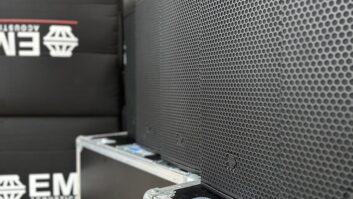
Kiley Henner, education and applications manager at Biamp Systems answers our questions about current issues and future prospects for audio networking.
How well do you think the capabilities (and limitations) of the current array of networking protocols are understood by the average AV integrator?
On the whole, there is a strong general understanding among AV integrators. Given the key role that integrators play in our industry, there is always a need to increase knowledge base and understanding of the benefits and limitations of the available AV protocols. For example, there are regular articles discussing the differences between the various protocols and the benefits of each (streamlined networks, increased functionality, expandability, etc.).
The educational opportunity that applies to both AV integrators and IT managers is how end-to-end digital networks can provide simplicity and ease of system management. When designed and installed correctly, digital components also increase efficiency and simplify the network responsibilities. IT managers specifically can reduce costs by sharing equipment across rooms and locations – removing the siloed approach for AV systems.
For example, a company can use a single AVB network to transport all media between rooms, such as a boardroom, the CEO’s private conference room, or a training room. By comparison, a siloed four-room environment would require four sets of equipment because each room would need its own DSP hardware. AVB protocols eliminate the need for each room to be addressed as an individual system, instead become part of a complete audio/video ecosystem; hence making it easier for IT professionals to remotely manage and troubleshoot the network on demand.
As networking needs continue expanding across varied environments, audio system architecture needs to be able to flex in response to growing needs and changes. Many businesses make decisions (whether due to a lack of knowledge or budgetary limitations) that lock them into infrastructures that are not expandable or flexible. Movement between protocols such as AVB, CobraNet, and Dante is possible – and within a single chassis with Tesira – it just needs to be planned for, so elements like infrastructure set-up and licensing costs are not surprises. Integrators need to think through decisions when committing their customers to a specific protocol, asking themselves if the investment will be able to support the current networking needs but also any future demands the business may experience.
Do you believe that open systems are always to be preferred over proprietary ones, or is there something to be said for proprietary solutions designed for specific needs?
As the demands on the network continue to increase, open systems have an advantage over ones requiring regular financial commitments. Open systems offer a strong combination of innovation and cross-industry learning. An example of this would be AVB. This protocol is one that spans across both consumer (automotive, entertainment) and commercial industries (professional AV, technology). Because AVB is not “owned” by any one company, innovation happens throughout the various industries that leverage this protocol. The cross-learning benefits are unlimited.
As businesses increasingly see technology as a business driver to increase productivity, efficiency and revenue, end-users are becoming more tech-savvy and looking at all options before committing, and are showing a preference of not being locked-in to propriety technology platforms – ESPN’s new $125 million Digital Center 2 (DC2) is a perfect example of an organization moving to an open protocol.
Do you think there will be an eventual ‘winner’ in the battle of networking protocols, or do you think that different approaches will always need to be taken in different vertical sectors?
I expect there will always be a variety of protocols for integrators, designers, and end users to choose from. The type of industry and the demands unique to each industry will influence this.
How far away do you think we are from total multi-vendor plug-and-play interoperability?
The promise of networked audio as a maturing and robust communications technology is that eventually most manufacturers will produce audio/video products that will be interoperable with each other.
Part of Biamp’s strategy in creating the DAN-1 card for our Tesira platform was to help accommodate the move towards multiple networking protocols with all three (AVB, CobraNet, Dante) available at the same time within the same chassis. This allows businesses to future-proof their installation while supporting whatever legacy systems they already have in place. This plug-and-play solution can satisfy the audio requirements of both everyday and enterprise applications. For example, our audio solutions can be used as standalone systems or as part of an AVB-networked solution.







